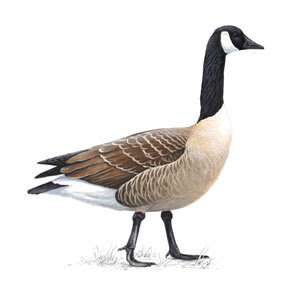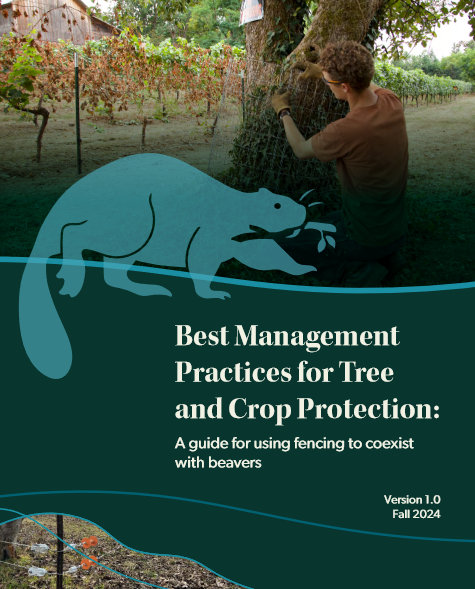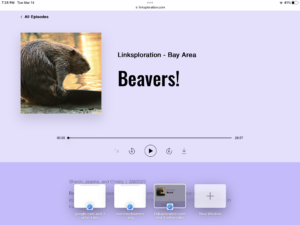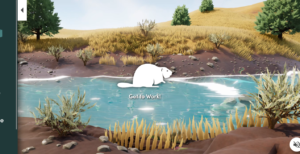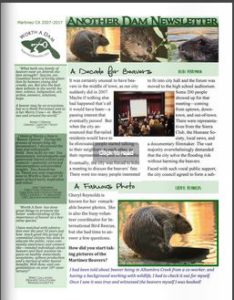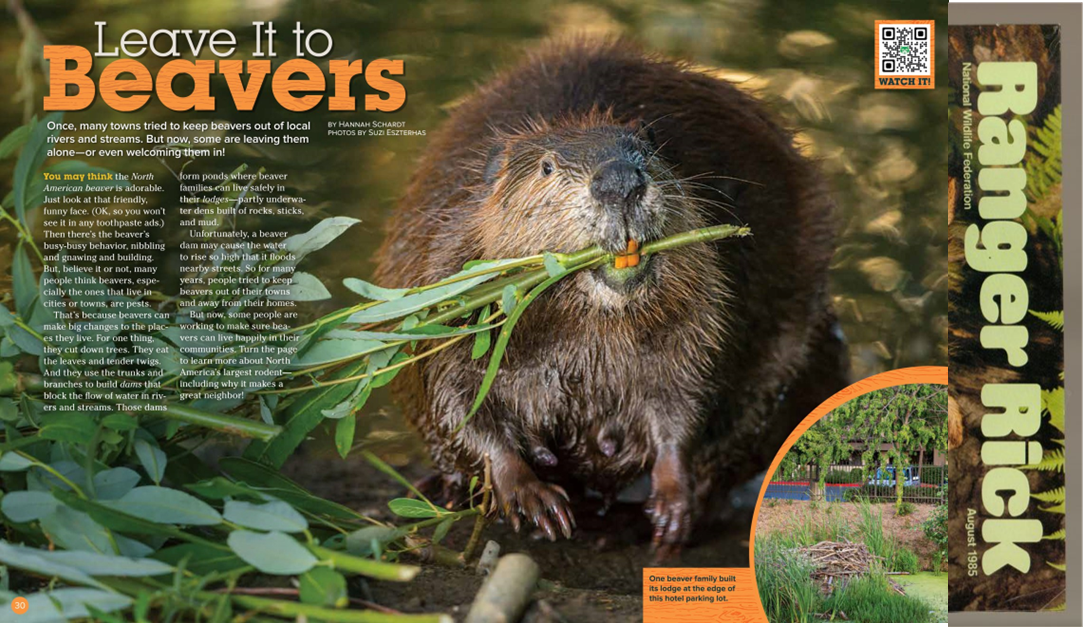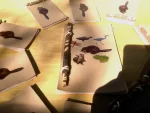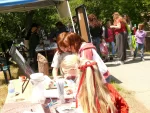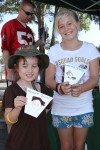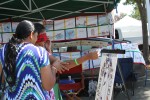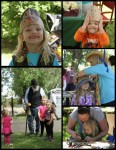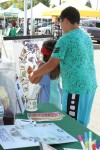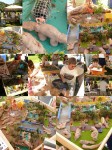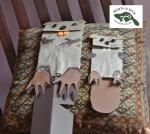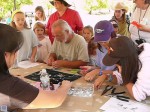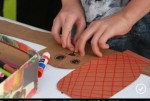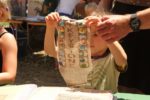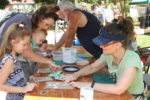Beaver Friend Leonard Houston, the chair of SURCP who worked tirelessly for this years “State of the beaver” conference in February, was so inspired by Brock’s description of the salmonid restoration conference he had to write a summary of his own. Here’s a little taste of the wonders he and the others brought to the beaver table.

State of the Beaver 2010, After Shock
The February 3rd, 4th and 5th, State of the Beaver Conference hosted by the Cow Creek Band of the Umpqua Indian Tribe , co-hosted by the South Umpqua Rural Community Partnership’s, Beaver Advocacy Committee and The Partnership for the Umpqua Rivers at the Seven Feathers Resort and Convention Center can be viewed as a tail splashing success.
From the Tribal welcome by Steven Rondeau of the Cow Creek Indians, to Leonard Houston of the Beaver Advocacy Committee’s opening speech, the conference took on a life of it’s own. Dr. John Hadidian, Director of the Urban Wildlife Program, of the Humane Society of the United States was first at the podium where he took us on a journey back in time, from early American beaver management to current human animal interactions. His presentation was not only inspiring but thought provoking as he challenges us to find non-lethal techniques to deal with beaver issues that we might enjoy beaver benefits.
Following Dr. Hadidian, from Norway, Dr. Duncan Halley of the Norwegian Institute of Nature Research took us to Europe where we learned of the beavers reconquest. Duncan taught us how conflicting human / human issues are more the forefront than human / animal issues.He also taught us how those issues have been resolved, allowing beaver reintroduction which has been successful throughout most of Europe. Dr. Halley spoke again as keynote presenter at the Beaver Banquet once again taking us world wide with human animal conflicts and the human resolutions in order to preserve wildlife and protect human interest.

Beavers and salmonid production was brought to life and light, by scientist Dr. Michael Pollock of NOAA. Michael is a well known research ecologist recognized as the foremost expert on west coast salmonid production and the relationship to beavers.Continuing the beaver, fisheries relationship, Jeff Rodgers accredited designer of the Oregon Coastal Coho Conservation Plan, appendix 3, and representing the Oregon Department of Fish and Wildlife, beaver workgroup shared with us his research, and how beavers positively impact salmonid production.
Completing day one was Dr. DeWaine Jackson, of the ODFW presenting the Pilot Study of beaver translocation efforts here in the Umpqua Basin’s. DeWaine is the lead researcher for the entire project which encompasses both forks of the Umpqua.
Day two began with a new and exciting project utilizing a fish hatchery as a beaver nursery to hold captive beavers until family units are established before release. Kent Woodruff was kind enough to present this collaborative effort partnering agency and the Yakima Indian Tribe of the Okanagan Region of Washington.
Dr. Suzanne Fouty a fluvial geomorphologist showed us that beavers radically modify degraded stream systems, collecting sediment and recharging aquifers while elevating water tables. Her presentation was both scientific and passionate displaying a side of science seldom seen and richly rewarding.
Greg Jaclke an ODFW biologist then taught us of the past and present beaver management practices in the John Day River Basin in north central Oregon. Greg has an acute understanding of people and beavers with a promising future in beaver ecology.
Sherri Tippie of Wildlife 2000 then took us on a 24 year slide show of how she has moved over a thousand beavers. Sherri is a licensed beaver translocator by the state of Colorado and a true pioneer in beaver reintroduction.
Skip Lisle owner operator of Beaver Deceivers International then showed us how a wide array of his non-lethal management devices save beavers lives while allowing us to enjoy the many beaver benefits. Skip was another dual presenter hosting a four hour workshop on building and installing beaver deceivers and flow control devices. Skip was followed by Stephanie Boyles of the Humane Society of the United States on the cost and efficacy of Skips devices. Stephanie’s presentation showed how the state of Virginia hired Skip to install his devices in areas of beaver roadway conflict and how those installation and maintenance costs compared to prior costs associated with the same sites, it was nothing short of amazing.
Lewis Pence a retired Idaho Soil and Water Conservationist taught us how he used beavers to restore degraded streams in the high desert country of southern Idaho, his straight forward presentation was a visual confirmation of everything we had learned so far. Following the banquet to which we were welcomed by Sue Schafer of the Cow Creeks and featured Dr. Duncan Halley as keynote presenter, the conference quickly became a networking extravaganza.
Day three began with Mary O’Brien of the Grand Canyon Trust, outlining the new Utah statewide beaver management program. Mary is a former Oregon resident who is doing amazing things in the field of beaver ecology. Dr. Jimmy Taylor of the USDA, APHIS, Supervisory Research Biologist then presented on the current research programs and beaver management policies of APHIS and his own beaver management actions. Jimmy is a very forthright and honest scientist who is actively pursuing non-lethal management techniques to enable beavers and humans to exist harmoniously and beneficially.
Following Dr. Taylor, Leonard Houston of the Beaver Advocacy committee, then took us along with the BAC and ODFW releasing and following transmitterd beavers of the Tiller Beaver Research Project, it was a first time seen presentation showing us where beavers go and what beavers do after being relocated. Leonard’s presentation then focused on future beaver plans for the South Umpqua, Elk Creek, Salmon Recovery Restoration Project and how landowners are partnering with agencies to provide habitat and home for beavers.
Steven Rondeau , Natural Resource Director of the Cow Creeks then shared the spotlight with Lewis La Chance, Cultural Resource Director of the Cow Creeks. Lewis presented telling us of how the Cow Creeks held beavers in high esteem and of great cultural significance. Steven Rondeau then talked of perspective of life and beavers focusing on how his people had survived to regain their rights and how it was similar to the plight of the beaver. Steven teaches us that when faced with incredible challenges, we can prevail.
The State of the Beaver 2010 has not only served as a powerful educational tool it has brought about a unification of agency and activist, it has created a n opportunity to work together to create a new future, one in which man and beaver exist harmoniously.


